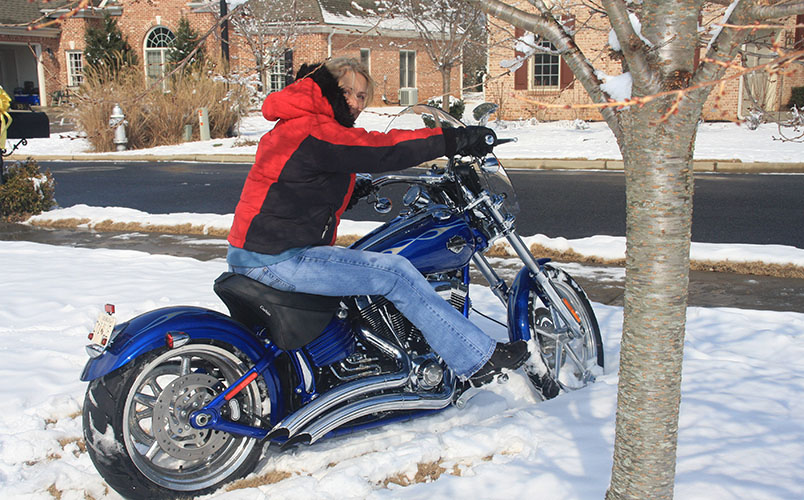With winter just around the corner, it may be time to start thinking about putting your bike up for the winter.
Here are a few tips to get your bike through the winter so you are read to ride in the spring.
Treat the fuel system. The first thing you need to do is fill your fuel tank and add a fuel stabilizer, like Sta-Bil. Use the ratio recommended on the stabilizer instructions, usually about one ounce of stabilizer per two gallons of gasoline. No, more is not better.
Also, it’s a good idea to add the stabilizer to your fuel at the gas station. That way, the ride home will mix it up and get it into the carburetors or fuel injection system.
Keeping the tank full reduces air space inside, which greatly reduces the possibility of condensation as temperatures change over the winter. The fuel also prevents rust from forming inside the tank.
The main job of the stabilizer is to maintain the properties of the fuel and reduce deposits and buildup inside your fuel system.
And for that last tank of gas, avoid fuel with a high alcohol content, as it will attract moisture. This is especially important if you’re keeping your bike in an unheated space.
Next, drain your carburetors if you have them. If you have fuel injection, you’re done with the fuel system. But if your bike is carbureted, you need to take some additional steps.
Even if you use stabilizer, standing gas in the carbs can evaporate and leave behind a varnish-like residue that clogs small openings in the carbs or keep the floats from moving freely. Draining it via the float bowls is the best way to prevent this.
Another good winter-prep step is to change all your bike’s lubricants. Changing everything is the ultimate in care because changing fluids removes the contaminants they contain.
If you don’t change all the fluids, at least check the motor oil quality and if it’s not somewhat transparent, change the oil and the filter; check the brake and/or clutch fluids and if they are as dark as new motor oil, they are contaminated and must be changed prior to storage (the fluid color when new is almost perfectly clear); test your bike coolant, if it has coolant, with a “ball checker” tester, available at any auto parts store. If it looks dirty or won’t protect against freezing at the temperatures you expect, change it before storage. This fluid should also be changed about every two years anyway.
The next step for proper winter storage of a motorcycle is to tend to your battery. If you take care of your battery, you won’t have to buy a new one every year. If your bike will be stored in a place where temperatures will fall well below freezing, remove the battery. An attached garage may stay warm enough for you to leave the battery in the bike.
Either way, the battery must be charged periodically. If your battery has removable caps, top it off with distilled water. If it is maintenance-free, don’t touch that cap.
Either use a charger that maintains the battery by monitoring the voltage level and turning on and off automatically to keep the battery just above 12 volts, or charge your battery weekly, using a very low-amperage trickle charger (1.5 amps or less).
Test the battery to be sure you’re not overcharging or undercharging it.
Finally, clean your bike, lube it, and cover it. Now is the best time to thoroughly clean and lube your bike. A good wash and wax now will go a long way toward protecting your bike’s finish.
Put a couple extra pounds of air pressure in your tires to avoid flat spots from sitting. Better yet, if you have stands, raise the bike off the tires.
If the bike is outside, spend the money and get a high-quality cover. Indoors, a light, breathable layer works best. In a pinch, a big, clean sheet will do, but a real cover protects against damage a lot better.






